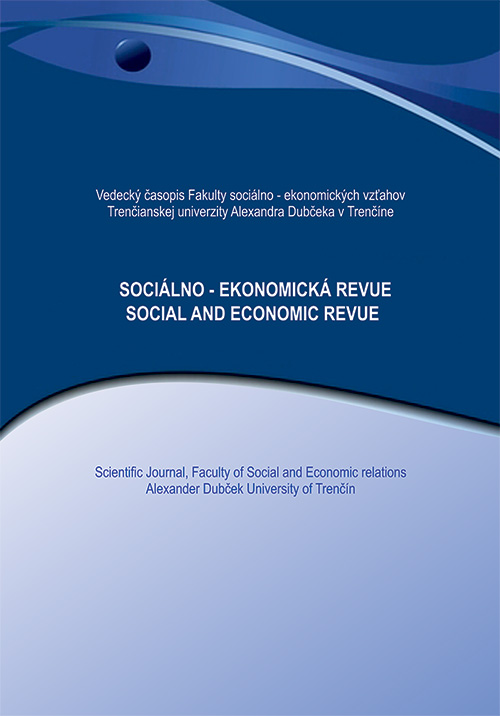MOTIVATION EMPLOYEES IN THE CONDITIONS OF ESTABLISHING E- GOVERNMENT IN PUBLIC ADMINISTRATION
Knowing the right motivation of employees is one of the basic assumptions of the successful functioning of the organization. The introduction of e-government into the public administration institutions changes the requirements for staff and their management, which requires examining the forms of motivation. The aim of the study presented is to analyse the opinions of the employees on the incentives employed by the employer and at the same time analyse the possibilities of motivating employees in relation to the introduction of the E-government.
Vydanie: 2019/4 Strany: 33-41 Klasifikácia JEL: L0, L6, L8
DOI:
Kľúčové slová: E-government, employee, motivation, public administration
Sekcia:
Kontakty:
Ing. Adriana Martošová
University of Alexander Dubcek in Trencin
Faculty economic and social relations
Department management and human resources management
Studentska 3, 911 50 Trencin
adriana.martosova@tnuni.sk
Literatúra:
Almukhlifi, A., Deng, H.P., Kam, B. (2019). Critical factors for the adoption of eGovernment in developing countries. 12th International Conference on Theory and Practice of Electronic Government. ASSOC: Melbourne. Pp. 397-407
Brown, M. M., & Brudney, J. L. (2003). Learning organizations in the public sector? A study of police agencies employing information and technology to advance knowledge. Public Administration Review, 63 (1), Pp. 30−43.
Eric W. Welch, Charles C. Hinnant, M. Jae Moon. (2005). Linking Citizen Satisfaction with E-Government and Trust in Government. Journal of Public Administration Research and Theory. Chicago. Pp. 1-21
Christian, V. H. (2004). Electronic Government and Development.The European Journal of Development Research, Vol.16, No.2. USA. Pp. 417-432
Ibrahim, K., M. Halid Kuscu. (2003). From e- Government to m-Government: Facing the Inevitable. Japan. Pp. 1-13
Means, G., & Schneider, D. (2000). Meta-capitalism: The e-business revolution and the design of 21st century companies and markets. New York: John Wiley & Sons Inc.
Mukamurenzi, S., Gronlund, A., Islam,S.M. (2019). Improving the quality of eGovernment services in Rwanda: the perspective of the service provider. Rwanda.
Sabani, A., Deng, H.P., Thajčina, V. (2019). Evaluation of eGovernment performance in Indonesia: thematic analysis. 12th International Conference on Theory and Practice of Electronic Government. ASSOC: Melbourne. Pp. 435-440
Shuib, L., Yadegaridehkordi, E., Anins, S. (2019). Malaysian cities are poorly receiving e-government applications and their satisfaction. Taylor & Francis AS, Karl Johans Gate: Malaysia.
Sundberg, L. (2019). Electronic Report: Towards Electronic Democracy or Endangered Democracy?. Netherlands. Pp.22-32
SME Ekonomika (2017). [online]. [cit.2019-10-10]. Avalaible on: https://ekonomika.sme.sk/c/20103489/pozrite-sa-na-kolkom-mieste-skoncil-slovensky-e government.html
Valentina, N. (2004). E- government for developing countries: oppurtunities and challenges. The Electronic Journal on Information Systems in Developing Countries. Albania. Pp. 1-24
Soon Ae Ch., Stuart S., Rodrigo S., Eduard H. (2010). Government 2.0: Making connections between citizens, data and government. Mexico. Pp. 1-9
Zhiyuan F.(2002). E- government in digital era: concept, practise and development. International Journal of The Computer, The Internet and Management, Vol. 10, No.2.Thailand. Pp. 1-22
Vinod, K., Bhasker, M., Irfan, B., Ajax, P. (2007). Factors for successful e- Government adoption: a conceptual framework. The Electronic Journal of e-Government Volume 5 Issue 1.Canada. Pp. 63-76


